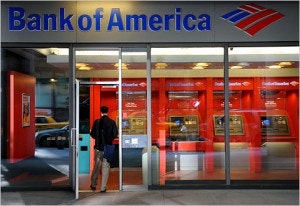I have written about it numerous times, but it is a point worth repeating and reiterating that is –
An investor’s psychology will likely influence their portfolio returns more so than the financial analysis they perform.
With this in mind, I am focusing in my current articles on the significant and various psychological traps investors and traders fall victim to. Often, without even realizing, they have done so. It is these that are the most insidious. It is one thing to know you lost money because of a bad investment decision that you made. But to lose money and not even be aware of the psychological traps that were at play is something else all together.
Loss Aversion – Trying to avoid losses can end meaning you lose big time!
No one likes to lose, this is no great revelation. From the time we are in early schooling we quickly learn that losing = bad, winning = good. Society teaches us that being wrong or losing is an emotionally undesirable occurrence. Because of this, we are powerfully shaped by psychological forces that unconsciously push us away from situations where we may experience loss.
Most of the time, this is a good thing and serves us well. However, when it comes to investing, this psychological program can often cause more problems than it avoids.
A situation where this shows up in investing when the cries of the market, the media, commentators, society etc. are that the stock market is a terrible place to put money, that a bear market is happening/bull market is about to collapse.
U.S. Financials – Where many an investor has lost big time!
U.S. financials is a sector where many people have been a victim of Loss Aversion. Owing to the big losses experienced because of the Global Financial Crisis (GFC), many investors are reluctant to invest in this sector. This fear is explained and justified by many commentators as being prudent because of the broader macroeconomic environment (sluggish GDP, housing still struggling etc.).
I believe these explanations are merely justifications for the actions people have already taken that is, sold out. Not wanting to experience the stress and loss they went through in 07-08, many investors have thrown the towel in with regard to investing in the U.S. financial sector. Even the mainstream commentary is bearish and skeptical. Earnings that are positive and growing are announced, yet they are discounted by commentators as unsustainable.
It is my suspicion (and hence investment thesis) that due to overwhelming sentiment that the majority of the U.S. Financials are doomed, and investors are fearful of losing capital in them that they, in actual fact, represent a great buying opportunity.
Few people are out in the investing world singing the praises of the financial sector. This leads me to think that the bullish sentiment for them is very limited and mute. Consequently, the current buying pressure is for naught. To me, this means that in time the likely movement in buying pressure will be to increase (as let’s face it, the pressure at the moment is quite lackluster).
For me, three companies stand out as good buying opportunities.

Something I find interesting is that many ordinary investors see Bank of America Corp (NYSE:BAC) and say ‘I can’t believe that Bank of America was trading at over $50 a share and in just a few months it was obliterated down to just $3!’ Few recognize that yes whilst that is true, it also moved from $3 to $18 a share in 2009 in virtually the same time frame it took to collapse. Smart and calculating investors had the potential to pick up nearly 5-fold gain.
